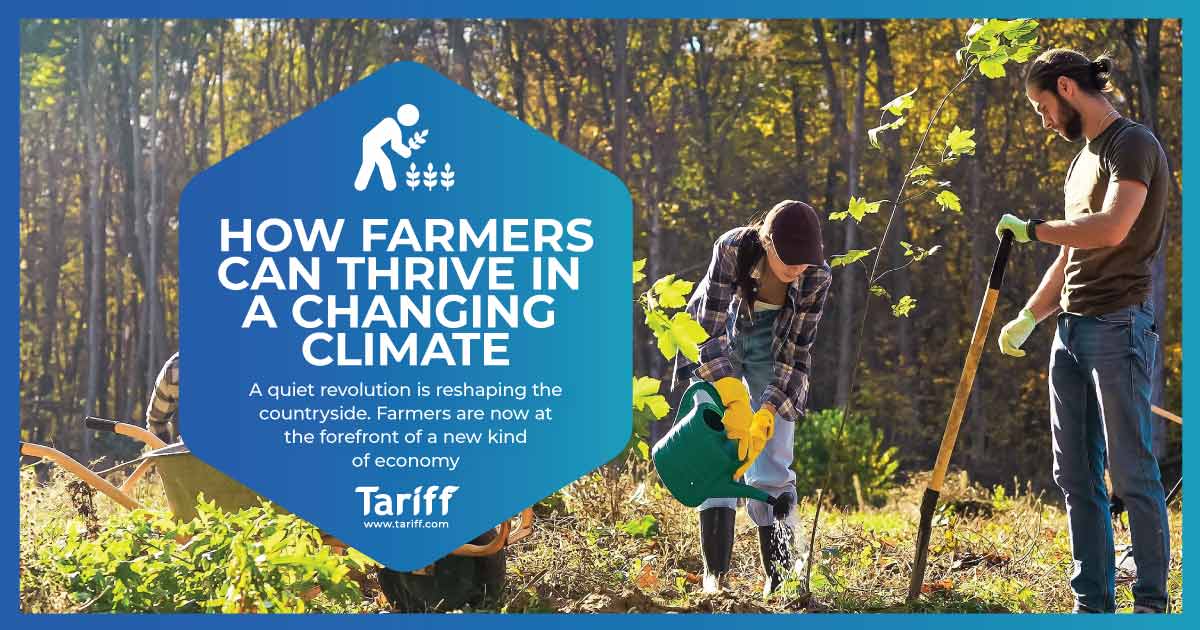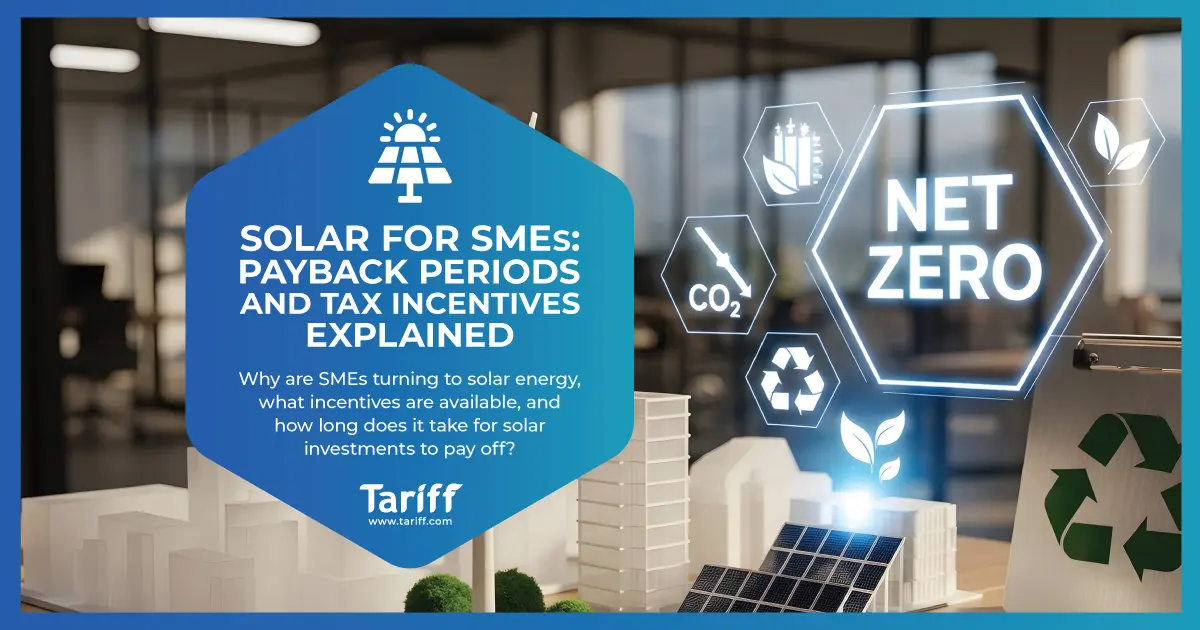The 10 Biggest Environmental Issues of 2025
As we navigate through 2025, the UK’s environmental landscape is marked by both significant challenges and promising advancements. From escalating climate events to progressive policy shifts, understanding these issues is crucial for businesses, policymakers, and individuals alike.
While the most polluted cities in the world are a long way away from becoming stable and sustainable, there’s steps you and your business can take to ensure a long and prosperous future, even as the world changes.
Let’s explore the most pressing problems the earth is set to face in the coming months and years, and how industry and business energy solutions are adapting to meet the shifting global landscape.
1. Climate Change and Extreme Weather Events
Climate change continues to be the most pressing environmental issue worldwide. In 2024, Europe experienced its hottest year on record, with catastrophic weather events affecting over 413,000 people. The European State of the Climate report highlighted severe floods, storms, wildfires, and record-breaking heatwaves across the continent, driven largely by fossil fuel-based global heating.
Globally, the average temperature in 2024 was 1.60°C above pre-industrial levels, marking the first calendar year to exceed the 1.5°C threshold. These unprecedented temperatures have led to more frequent and severe natural disasters, including hurricanes, droughts, and wildfires, affecting millions and causing significant economic losses.
The World Health Organisation has said that, by 2035, the cost of the damage caused directly by climate change could be as high as £4billion, as well as an estimated 250,000 additional deaths per year due to malnutrition, heat stress, and other temperature-related illnesses (like diarrhoea).
2. Global Reliance on Fossil Fuels
The continued global dependence on fossil fuels remains a major barrier to tackling climate change. Renowned economist Nicholas Stern has described climate change as a “result of multiple market failures”, where environmental costs are not properly reflected in the price of carbon-heavy activities.
To correct this, experts have long advocated for policies that make polluting more expensive—especially through mechanisms like carbon pricing. A carbon tax, for instance, places a direct cost on emitting greenhouse gases and encourages investment in cleaner technologies by making fossil fuel use less economically attractive.
Although progress has been made, current efforts fall short. According to the OECD’s 2019 Taxing Energy Use report, most existing tax frameworks do not effectively reflect the true environmental cost of various energy sources. Coal, one of the dirtiest energy sources, often receives lighter taxation compared to its emissions impact—despite being a major contributor to global carbon output.
Today, at least 27 countries—including Sweden, Canada, Japan, and several EU nations—have implemented national carbon taxes. Among them, Sweden’s carbon tax is often cited as a success story. Introduced in 1991 and now set at approximately $130 per tonne, it has helped the country cut emissions by about 25% while still growing its economy by more than 75% over the same period (World Bank).
But emissions pricing alone isn’t enough. Governments must also invest heavily in clean energy research and development to make renewables more cost-effective. Complementary policies—such as regulations, subsidies for green infrastructure, and phasing out fossil fuel subsidies—are all needed to address the complex web of market failures surrounding the climate crisis.
At the global level, the Paris Agreement, adopted under the United Nations Framework Convention on Climate Change, serves as a cornerstone for international climate policy. The agreement calls for countries to limit global warming to “well below” 2°C, with an aspirational goal of keeping it under 1.5°C. But the agreement is non-binding, and countries face no direct penalties for missing their emissions targets—making enforcement a persistent challenge.
Tackling fossil fuel dependence requires coordinated global action and domestic policies that make clean energy more affordable, and dirty energy more costly. Without decisive shifts in both pricing and investment, progress will remain too slow to meet climate goals.
3. Biodiversity Loss and Habitat Degradation
Biodiversity loss remains a critical concern. Human activities, particularly industrialisation and urbanisation, have led to habitat destruction and pollution, directly impacting biodiversity. For instance, the expansion of palm oil plantations in Southeast Asia has resulted in massive deforestation, destroying habitats for numerous species, including orangutans and Sumatran tigers.
Over the past 50 years, human activity has rapidly increased, depleting Earth’s resources. A 2020 WWF report revealed a 68% decline in wildlife populations from 1970 to 2016, primarily due to habitat loss and illegal wildlife trade. The sixth mass extinction is accelerating, with over 500 species of land animals at risk of extinction within 20 years.
4. Deforestation
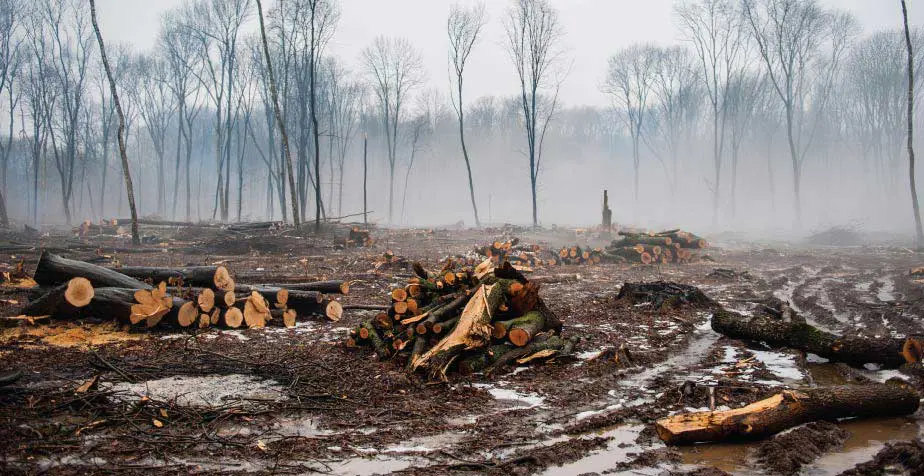
While this isn’t necessarily something we’ll see much of in the UK, deforestation across the world represents a massive pressing issue, and is a huge contributor towards the changing climate of the Earth.
According to statistics from Conservation.org, forest coverage has more than halved since the 1960s. In Brazil alone, an area more than twice the size of the UK has been destroyed over the last 20 years, and global logging and deforestation shows no signs of slowing.
Removing these trees doesn’t just destroy ecosystems and disrupt the fragility of nature, either. Trees are at the heart of the livelihood and business of many Indigenous peoples, and deforestation ravages these communities, and drives them further from their homes and families.
Not only that, but trees are one of the Earth’s last lines of defence against the increasing levels of carbon dioxide in the atmosphere. Under normal circumstances, trees convert carbon dioxide into oxygen, which helps nourish life, provide cleaner air, and maintain the delicate equilibrium of life.
Deforestation and disruption to forests and jungles means that those trees release their carbon dioxide back into the atmosphere, and pile pressure onto an already buckling ozone layer. In fact, the WWF estimate that deforestation is the direct cause of 10% of the global warming we’ve seen over recent years.
5. Air Pollution and Public Health
Air pollution is a significant global health issue. Outdoor air pollution causes an estimated 4.2 to 7 million deaths annually, according to the World Health Organisation. Major sources include industrial activities, motor vehicles, biomass burning, and dust storms. In South Asia, high pollution levels reduce life expectancy by about five years.
Urban areas, in particular, face heightened risks due to higher pollution levels and the prevalence of invasive species like ragweed. Addressing air quality is essential for safeguarding public health and enhancing quality of life.
6. Melting Ice Caps And Sea Level Rise
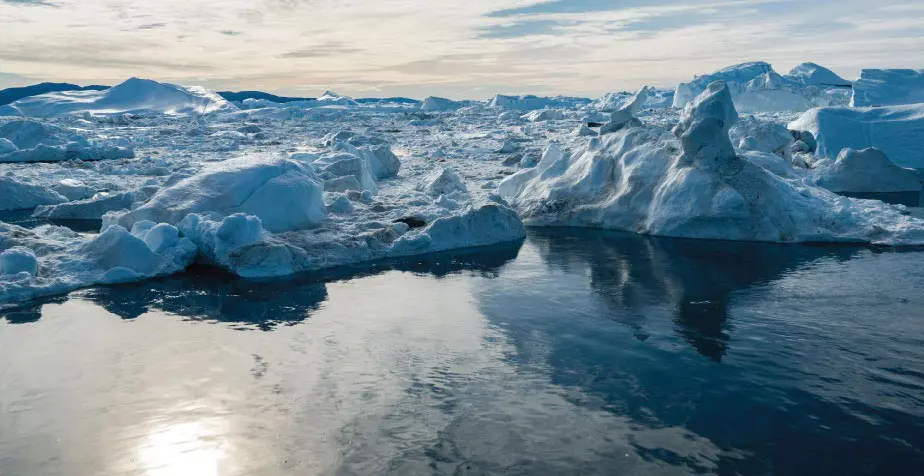
The Arctic is heating up at more than double the rate of the rest of the planet, triggering widespread environmental consequences. One of the most alarming is sea level rise, which is now occurring at more than twice the pace it did for much of the 20th century.
Currently, global sea levels are rising by an average of 3.2 millimetres per year, and projections suggest an increase of up to 0.7 metres by 2100. The primary driver of this trend is the melting of land-based ice, especially in Greenland and Antarctica.
Greenland’s ice sheet is a major contributor. In just two months during the summer of 2020, it lost around 60 billion tons of ice—enough to raise global sea levels by 2.2 millimetres. In 2019 alone, satellite data showed it was losing ice at a rate of about one million tons per minute. If Greenland’s entire ice sheet were to melt, it could push sea levels up by around six metres.
Antarctica is also a key player. The continent has shed roughly 7.5 trillion tons of ice since 1997, currently adding about 1 millimetre to sea level rise each year—roughly a third of the global annual total. The recent collapse of Canada’s last fully intact Arctic ice shelf, which lost 40% of its mass over just two days, illustrates the rapid pace of polar ice decline.
Scientists have pieced together the full extent of these losses using satellite imagery—over 100,000 photos of Antarctica alone have been analysed to track the changes in its ice shelves.
The consequences of rising seas are far-reaching. Coastal communities are especially vulnerable. According to Climate Central, up to 480 million people living in low-lying areas could be displaced by the end of the century. Cities like Bangkok, Ho Chi Minh City, Manila, and Dubai face particularly high risks of chronic flooding, which could trigger mass migration, overcrowding, and increased pressure on infrastructure and resources in inland areas.
7. Coral Extinction
While we often only associate coral reefs with kaleidoscopic colour and vibrant ocean creatures, they’re actually a much more important resource than you’d first realise.
They’re a habitat to a quarter of all marine life, plus The Reef World Foundation estimate that around a billion people across the globe rely on coral reefs for food, industry and their livelihoods. Plus, the ocean contributes over 50% of our global oxygen, according to the National Ocean Service, a fact often overlooked when considering the welfare of our waters.
The health of coral the world over has been in decline for over 30 years, with the iconic Great Barrier Reef at just half the size it was. And that’s a huge cause for concern, especially given its place as one of the largest natural producers of oxygen, and a home to an incredibly diverse range of life.
There is hope, though. The Australian government has implemented the Reef 2050 plan, which aims to preserve and protect the integrity and wellbeing of the remaining reef.
8. Plastic Pollution and Waste Management
Plastic pollution continues to challenge waste management systems globally. The world generates 300 million tonnes of plastic waste on average each year. A Nature report reveals that 14 million tons of plastic enter oceans yearly, threatening wildlife. Without action, this could rise to 29 million tons by 2040, reaching 600 million tons including microplastics.
Microplastics have infiltrated food chains, posing health risks to humans and animals. Despite global efforts, plastic waste continues to choke oceans, rivers, and wildlife.
9. Food Waste
Globally, about one-third of all food grown for human consumption never actually gets eaten. That’s around 1.3 billion tons of food wasted or lost each year—enough to feed roughly 3 billion people. The scale of this issue not only highlights widespread inefficiency but also reveals a serious environmental cost.
If food waste were a country, it would rank as the third-largest emitter of greenhouse gases, coming in behind only China and the United States. In total, food waste and loss are responsible for about 25% of all emissions each year. These figures come from Our World in Data, which also shows that food production as a whole contributes approximately 26% of global greenhouse gas emissions. (source)
Where the waste occurs differs dramatically between richer and poorer nations. In low-income countries, most losses happen early in the supply chain—during harvesting, storage, and processing—largely due to a lack of infrastructure and technology. On the other hand, in wealthier nations, the bulk of the waste happens at the retail and consumer level. Here, food is often discarded not because it’s unsafe, but because it doesn’t meet cosmetic standards.
For example, in the United States, over half of all produce that’s thrown away is rejected simply for being misshapen or “unattractive.” That translates to about 60 million tons of fruits and vegetables dumped annually because they don’t look appealing enough to sell.
Reducing food waste isn’t just about feeding more people—it’s a critical part of cutting emissions, preserving land and water, and improving sustainability in food systems worldwide. Addressing the issue requires changes across the board—from how food is harvested and stored to how it’s sold and consumed.
10. Fast fashion and textile waste
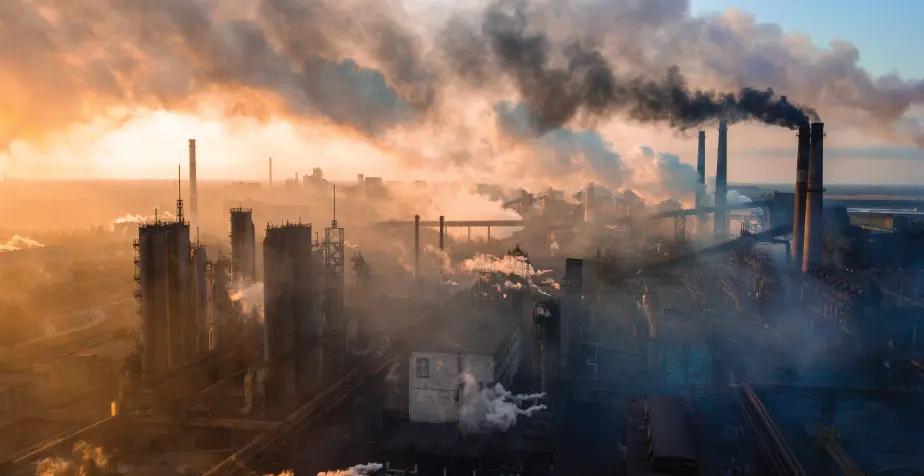
The fashion industry is a major contributor to global environmental damage, responsible for roughly 10% of worldwide carbon emissions. That’s more than the combined emissions of international flights and maritime shipping, according to the UN Environment Programme.
One of the most resource-intensive aspects of the industry is textile dyeing, which generates nearly 20% of global wastewater—around 93 billion cubic metres each year. This wastewater often contains toxic chemicals that pollute rivers and groundwater, especially in countries lacking adequate treatment infrastructure.
Beyond emissions and water use, the world is also dealing with a mounting textile waste problem. An estimated 92 million tonnes of clothing and fabric are discarded every year, with projections showing that number could rise to 134 million tonnes annually by 2030. Much of this waste ends up in landfills or is incinerated, releasing further pollutants into the air and soil. Synthetic fibres like polyester and nylon, which are commonly used in low-cost fashion, do not break down naturally and shed microplastics that leach into ecosystems and water supplies.
The global nature of the problem is starkly visible in places like Chile’s Atacama Desert. Known as one of the world’s largest dumping grounds for unwanted clothing, it receives mountains of discarded garments—often from Europe, North America, and Asia. In 2023 alone, around 46 million tons of second hand and unsold clothes were left to decompose there, according to Chilean customs authorities.
The driving force behind this crisis is the fast fashion model: a business strategy built on producing cheap, disposable clothing at speed to keep up with constantly shifting trends. While some major brands have signed the UN Fashion Industry Charter for Climate Action, committing to net zero emissions by 2050, the majority of companies have yet to make serious changes. For real progress, the industry must prioritize sustainability at every level—from design and production to consumption and disposal.
What’s The Future For The Environment?
While there’s no way to know what’s around the corner when it comes to the environment, what is certain is that drastic changes need be actioned in order to prevent catastrophe.
COP26, a climate summit held in late 2021, set out ambitious yet necessary goals for the future of the planet, providing guidance on the way forward when it comes to addressing major global issues.
The chief resolution was a promise for global net-zero by 2050. World governments have already started to put their money where their mouths are, with a combined worldwide funding of $100billion per year being afforded to climate projects.
These major targets are in addition to the UN’s 2035 Agenda for Sustainable Development, which set out to fortify Earth against the dramatic effects of climate change, and begin the process of rectifying humanity’s effects on the planet.
It’s these initiatives that prompt a shift in the mindset of businesses and business owners across the globe. It’s imperative to act now, and secure the future of your enterprise as the world starts its recovery.
Committing to going net-zero, ahead of the government’s 2050 target, is the sensible decision for the conscientious business owner. It guarantees you’ll be using renewable energy sources, as well as making eco-conscious decisions for both you and your customers.
With Tariff’s signature business energy switching service, you’ll be well ahead of the curve, and eliminate the stress and hassle of sourcing the right provider for your unique business.
Plus, with our pioneering work in conjunction with PyroCore technology, you’re able to get in at the ground level of the future of electricity and gas.

